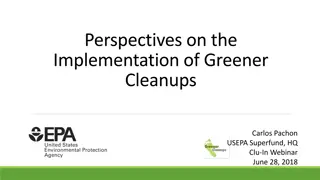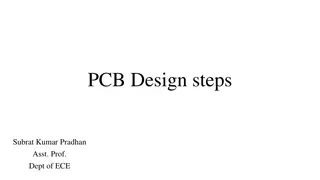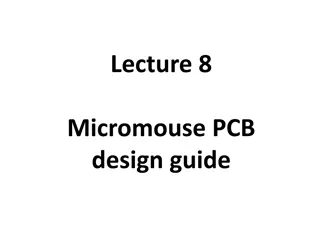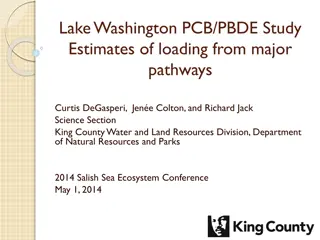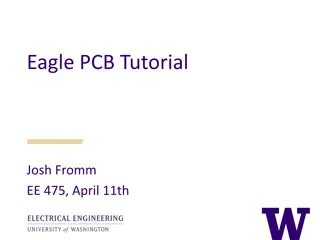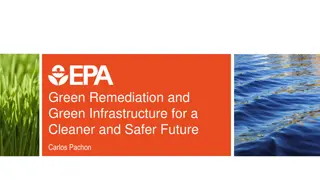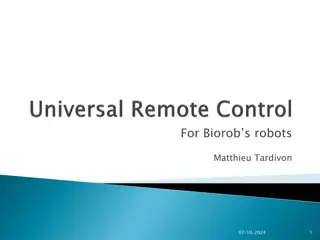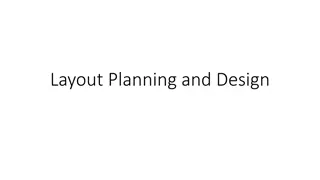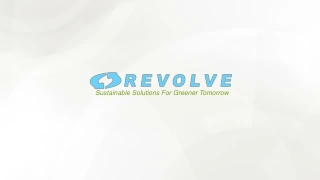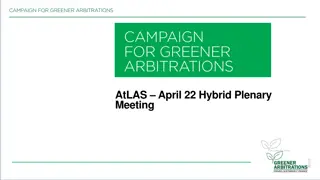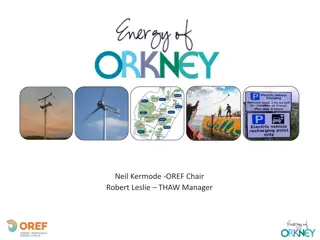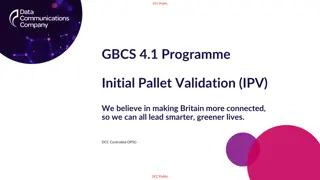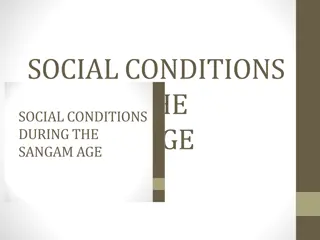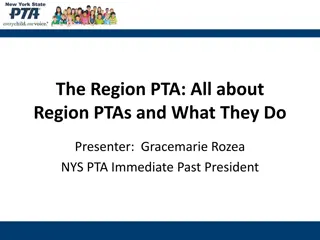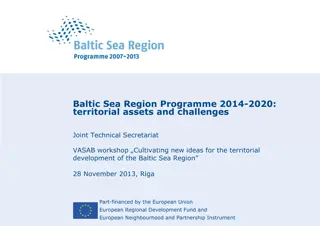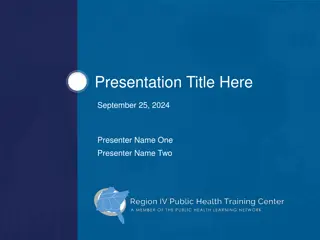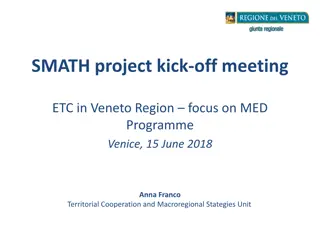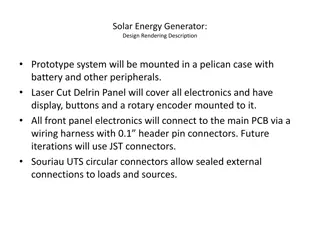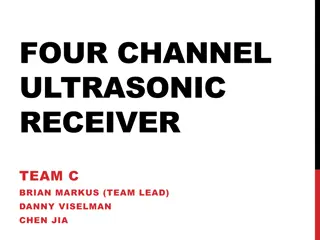Greener Cleanups in Region 10 PCB Program Overview
The Region 10 PCB Program integrates greener cleanups to reduce environmental impact. This presentation discusses the implementation of greener cleanups, using the ASTM Standard Guide for PCB cleanup approvals. The goal is to ensure protection of human health and the environment while minimizing the environmental footprint of cleanup activities. Various aspects of the implementation process, site assessment, and remedy optimization are highlighted, showcasing successful case studies in Region 10.
Download Presentation

Please find below an Image/Link to download the presentation.
The content on the website is provided AS IS for your information and personal use only. It may not be sold, licensed, or shared on other websites without obtaining consent from the author. Download presentation by click this link. If you encounter any issues during the download, it is possible that the publisher has removed the file from their server.
E N D
Presentation Transcript
Greener Cleanups in the Region 10 PCB Program Michelle, Mullin R10 PCB Coordinator Clu-In Webinar November 17, 2015
Presentation Overview Why the R10 PCB Program integrates Greener Cleanups Implementing Greener Cleanups in R10 PCB Approvals Using the ASTM Standard Guide at a PCB cleanup Region 10 Success Stories 2
Why? PCB approvals are written for site cleanups EPA s goal is to evaluate cleanup actions comprehensively to ensure protection of human health and the environment to reduce the environmental footprint of cleanup activities The PCB regulations for risk-based cleanups require that EPA find no unreasonable risk of harm to human health or the environment" 3
Implementation Site Assessment BMPs Quantitative Evaluation Remedy Selection Quantitative Evaluation with BMPs Remedy Design/ Implementation Remedy Modification BMPs Typical PCB Program involvement Remedy Optimization Operation, Maintenance and Monitoring Quantitative Evaluation with BMPs BMPs Remedy Optimization or Modification No Further Cleanup 4
Implementation Process in R10 Types of PCB Cleanup sites where the Standard Guide has been used: Self-Implementing remediation waste Risk-based remediation waste Alternate decontamination Typical scenario: 1. EPA R10 receives an application for cleanup at a site that has already been characterized, and selected the remedy. 2. EPA discusses Workplan and modifications with the facility- Compliance with the regulations, conceptual site model, risk considerations, etc. Notify facility of requirement to implement the Standard Guide for Greener Cleanups, and identify potential options 5
ASTM Standard Guide for Greener Cleanups E2893 7
Standard Structure 32 pages total 1. Scope 2. Referenced Documents Administrative 3. Terminology 4. Significance and Use 5. Planning and Scoping 2 pages! 6. BMP Process Protocol 7. Quantitative Evaluation 2 pages! 8. Documentation and Reporting 9. Keywords 8
Appendices X1 Supporting Documentation X2 Technical Summary Form Adjuncts X3 BMP Table X4 Supplemental Information for a Quantitative Evaluation 9
BMP Table 10
BMP Table Using it for PCB Cleanups Excavation and Surface Restoration = common remedy for PCB Cleanups oStep 1: Identify BMPs that are potentially applicable = every row with an X under the remediation technology oStep 2: Prioritize those with greatest potential for reducing environmental footprint oStep 3: Select which to apply, with rationale 11
Common BMPs from R10 PCB Sites Air -Implement an idle reduction plan -Control dust to minimize environmental impacts Materials -Salvage uncontaminated objects/infrastructure with potential recycle, resale, donation, or reuse -Use dedicated materials when performing multiple rounds of sampling -Use onsite or nearby sources of backfill material for excavated areas, if shown to be free of contaminants Site Preparation/Land Restoration -Revegetate excavated and disrupted areas as quickly as possible using native vegetation, if possible, and restore as close as possible to original conditions -Minimize soil compaction and land disturbance by restricting traffic to confined corridors and protecting ground surfaces with biodegradable covers, where applicable Water -Install earthen berm on landfill covers that utilize on-site/local materials to manage stormwater 12
Step 4: Facility Carries out cleanup, implements BMPs 13
Step 5: Completion and Documentation EPA R10 receives Cleanup Completion report BMP Documentation included Facility may receive publication on ASTM Website http://www.astm.org/COMMITTEE/E50.htm o Documents are maintained in the Public Library of E2893 Greener Cleanup Reports 14
Reporting The Boeing Company, in Everett, WA, First PCB Cleanup published on the ASTM website. 15
Standard Guide for Greener Cleanups = Cost Savings Guide for Facilities $ Not a burden- it saves the facility $$ oReduced transportation costs oDecreased shipping costs oReduced materials costs oDecreased labor costs Some BMPs are already standard practice oreporting = recognition $ $ $ $ $ $ $ $ $ $ $ $ $ 16
Success Stories Implemented since April, 2014 9 cleanup sites approved with Greener Cleanups condition 5 Sites have completed and submitted completion reports including ASTM reporting. 17
Success stories in R10 Variety of sites addressed oSmall transformer vaults oLarge abandoned landfills oTank decontamination oIndustrial facilities oRural sites oFederal sites oPrivate commercial sites 18
Next steps in R10 PCB Program Encourage use of other, less frequently implemented BMPs Develop Baseline BMPs that can be used at all PCB Cleanups Integrate Baseline BMPs into Workplans Regions and Headquarters developing a National Fact Sheet At least 3 other regions are also including Greener Cleanups in PCB approvals following the R10 model 19
Beyond the Standard Guide Evaluating Risk-Based cleanups where PCB waste will stay in place for climate change impacts Can we find no unreasonable risk given climate change impacts in the future? Focusing first on flood risks as a result of climate change Executive Order 13690, Establishing a Federal Risk Management Standard and a Process for Further Soliciting and Considering Stakeholder Input signed January 30, 2015 to improve the Nation's resilience to current and future flood risk https://www.whitehouse.gov/the-press-office/2015/01/30/executive-order-establishing-federal-flood-risk-management- standard-and- 20
Contact Information Michelle Mullin PCB Coordinator, EPA Region 10 mullin.michelle@epa.gov 206-553-1616 21


